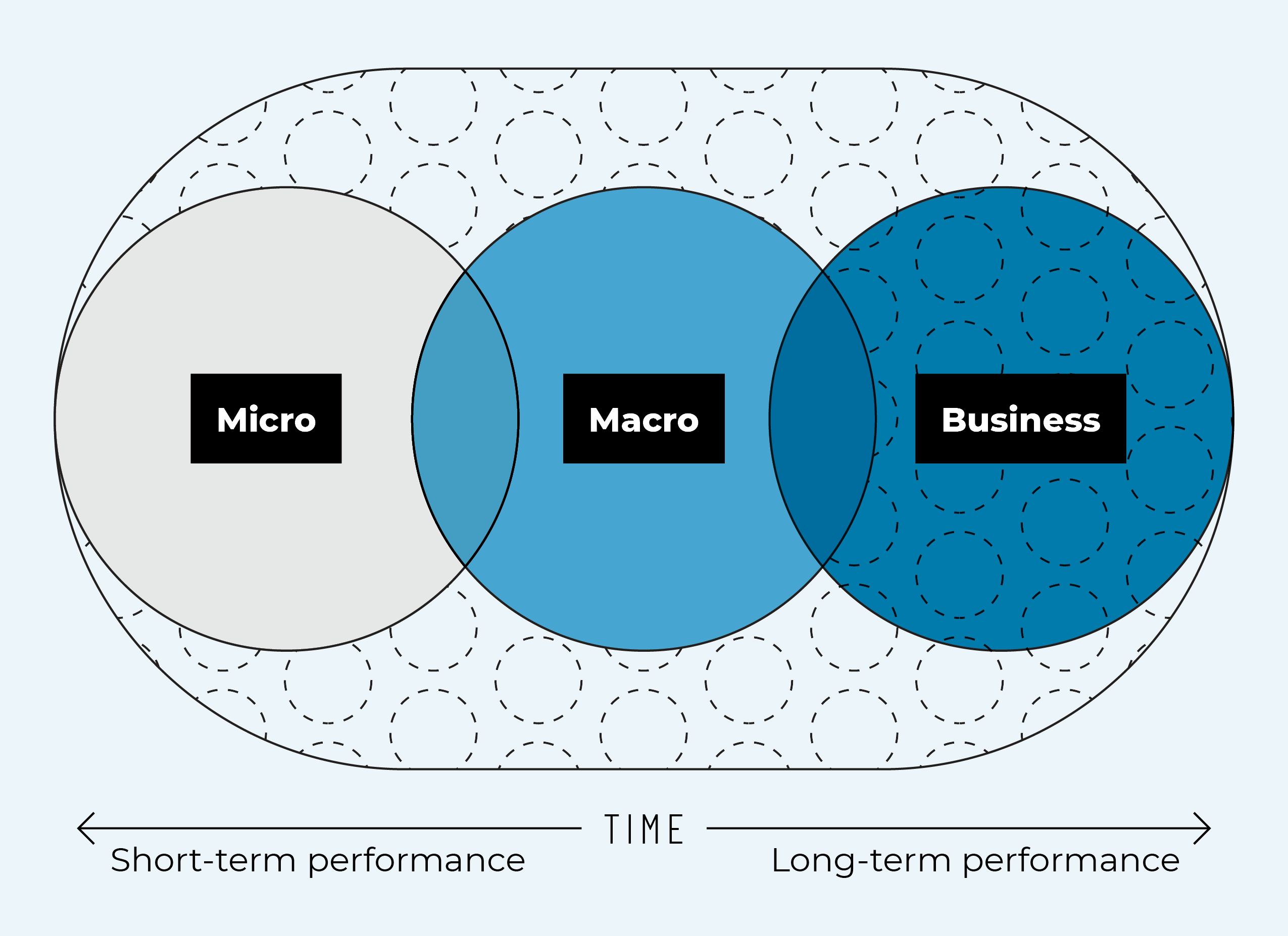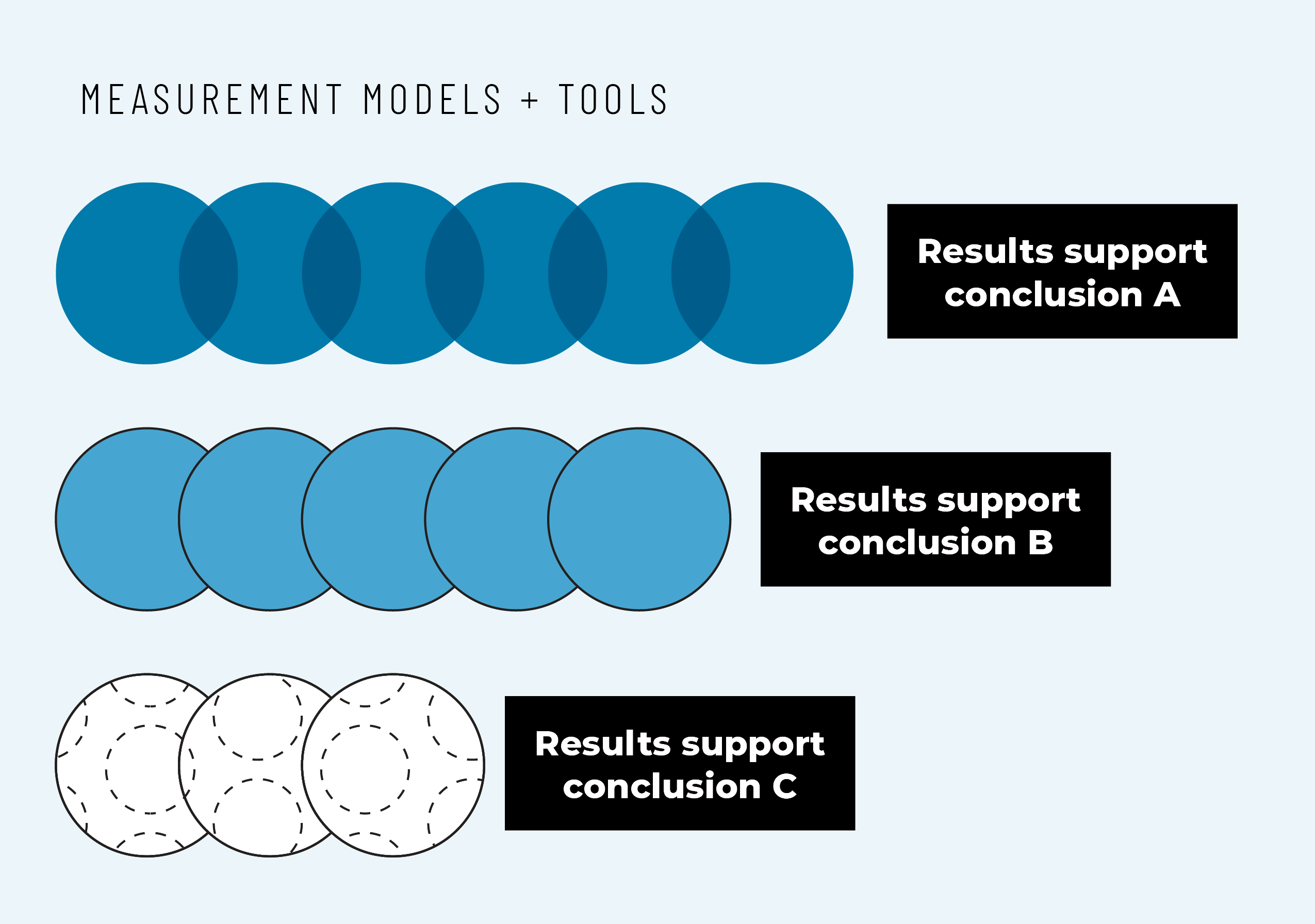How To Measure a TV Advertising Campaign's Effectiveness
After investing in a big marketing initiative like TV advertising, the most disappointing outcome is not knowing if your campaign worked. Unfortunately, it's a surprisingly common outcome.
TV advertising is one of the most effective and impactful marketing channels. It’s unmatched in reach, visibility and credibility. But it isn’t known for being easy to measure.
In fact, some brands shy away from TV for this exact reason. They must prove the value of their marketing efforts, and that doesn’t seem possible with TV. Sadly, this means they miss the benefits TV has to offer.
But TV advertising can be an accountable, measurable marketing channel, even beyond traditional metrics like reach and frequency. However, accurately evaluating TV’s impact does require a strategic approach, the right tools, and recognizing there’s no single data point that determines success. Below, we’re exploring best practices to help marketers effectively evaluate their TV initiatives.
Develop a strategic pilot plan before launching TV.
The strategy and set-up of your campaign can make or break your TV efforts long before your first airing. Here’s how to design your campaign for easier measurability.
- Set clear goals from the very beginning. Before anything else, articulate your top priorities for your campaign. Depending on your goals, additional preparation may be required. If you’re focused on driving new customers to your website, for example, you’ll want to establish a baseline for current web traffic before introducing TV and make sure your commercial directs viewers to your site. Plus, being crystal clear about the numbers you need to hit to achieve success will make your job easier down the road.
-
Spend enough to drive a measurable impact. Your TV test must have enough media spend to noticeably affect your business. This means larger businesses with lots of activity driven by many marketing sources may need to spend more than a smaller business to evaluate the effectiveness of their TV ads. Or, if your budget is limited, spend very strategically—even if it’s on a smaller scale. One way to do this is to use control markets. There are dedicated markets where you don’t run TV ads. Then you can compare the performance of markets with TV advertising to those without.
- Isolate TV’s influence. Avoid launching your first TV campaign the same week you also make a major change to your website. Or at the same time you're dramatically changing spend in other channels due to a new product launch. Sure, this isn’t always possible, but when it is, fewer variables will make it easier to determine exactly what’s caused by TV, rather than other channels.
Also consider the seasonality of your business when looking at the timing of your campaign launch. If you see increased orders during a holiday season, you may need to spend more compared to during the off-season to know results were driven by TV, not just the time of year.
Analyze your TV campaign’s micro, macro and business impacts.
A successful TV advertising campaign will drive both short and long-term effects. Only by reviewing your campaign’s influence across the buyer’s journey can you understand its full impact on your business.
- Micro Impacts. Start by looking at TV’s most obvious and immediate effects. This includes tracking response through calls, texts, app downloads or web traffic after launching TV. At Marketing Architects, we get as granular as looking at response in the first three minutes after each airing. And of course, although the immediate results of TV are exciting, it’s also essential to track the channel’s impact over time.
- Macro Impacts. Not everyone responds right after seeing an ad on TV. It might take a few weeks, or they might have to see your ad twice, before a viewer searches online or texts a number for more information. So after a few months on TV, you should be tracking new changes.
Your website traffic composition may shift. TV primarily drives paid search, direct, and organic traffic. With a TV campaign attracting new customers, you should expect a greater percentage of traffic to come from these sources. Conversion rates should also increase—TV drives an especially high-intent customer. And, depending on the company, changes in brand awareness may be felt at this point. - Business Impacts. These are the most exciting effects of TV, but they can take longer to fully realize. For example, your company may experience shifts in brand recall, familiarity, and memorability over time. Or you may discover newly opened doors for fundraising and investment opportunities. And of course, you should see revenue growth.
Our clients have seen average lifetime value rise due to the high-value customers TV drives. They’ve also experienced improved performance across channels like digital, direct mail, and affiliate marketing thanks to TV-driven improvements in brand awareness and perception.
Use a combination of measurement tools and strategies for accurate TV attribution.
Because you can only understand TV’s full impact when looking at all its effects, no single measurement model or tool is enough to determine TV’s success on its own. Instead, use and compare multiple TV attribution models. If they’re all telling a similar story, you can be confident in your results.
Below are several of the ways we analyze both short and long-term performance across our clients’ campaigns.
-
Track short-term response and new customers on your website. To measure the immediate, micro results of your campaign, make sure to include a clear call-to-action (CTA) in your TV ads. By providing a specific action for viewers to take, such as visiting a website or scanning a QR code, you encourage consumers to respond in a way that can be tracked. There are many tools like Google Analytics that provide insights into website traffic, conversions, and user behavior—allowing you to analyze online changes resulting from TV.
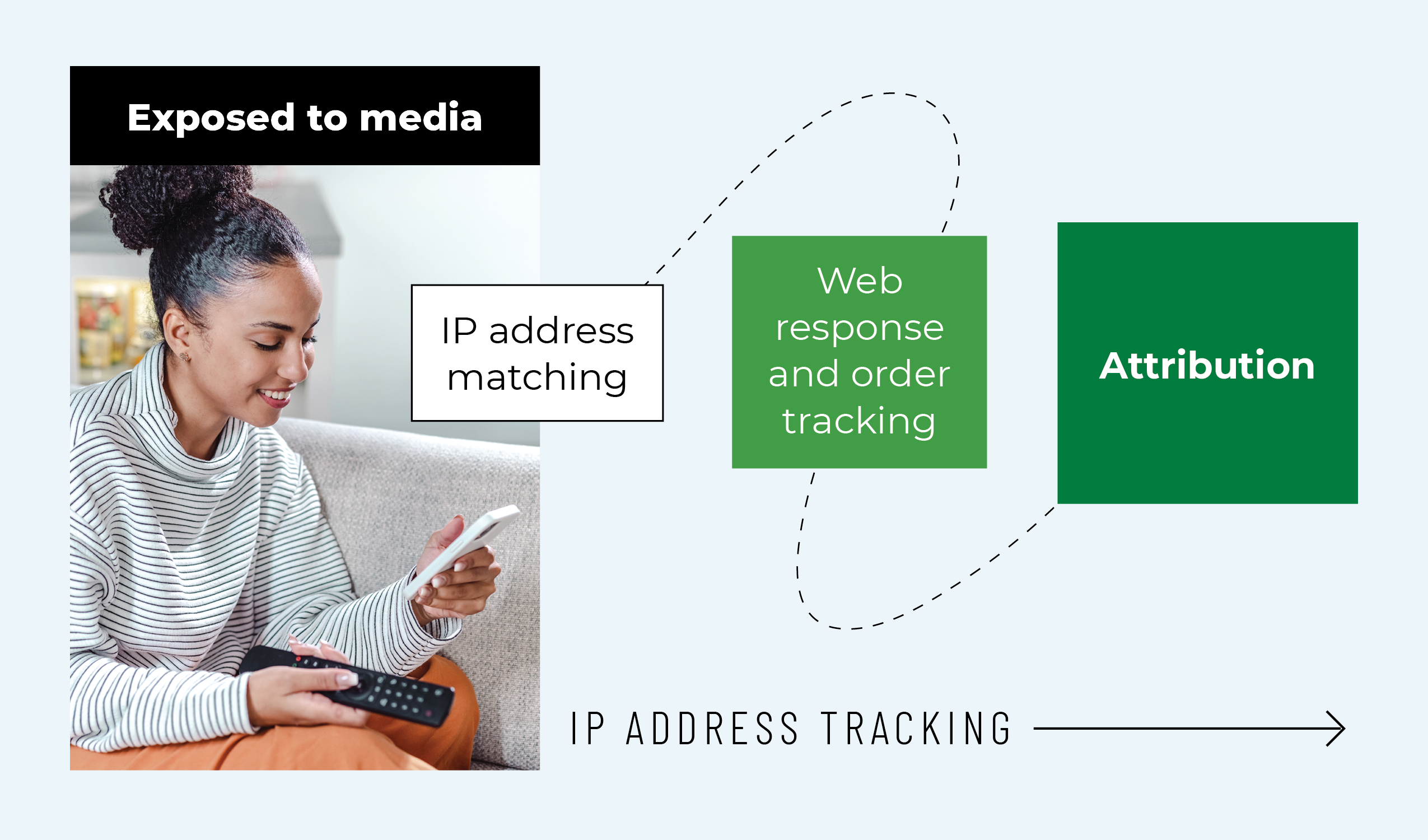
-
Use ACR measurement. Automatic content recognition (ACR) technology is built into smart TVs to track which content is watched across both linear and streaming TV. Smart TV users must opt in to allow this tracking, so this data doesn’t account for everyone, but those who opt in are a large enough group to provide strong indicators—in 2021, Vizio alone had more than 18 million ACR-enabled TVs.
After ACR recognizes the content being viewed, it can tie that to a specific household. This information can help you understand the audiences you’re reaching, how they’re responding, and make sure you gain unique reach across your linear and streaming campaigns. -
Test adding a survey to your website. You can also add a “How did you hear about us?" survey to your website as part of your checkout process. This allows you to gather data on how customers discovered your brand—directly from the customer. Customers who list TV as their source can then have their sales attributed to your TV advertising efforts. This is also a great way to track performance across all marketing channels, not just TV.
-
Look for cross-channel impacts. No marketing channel works in complete isolation, but TV advertising has an especially noticeable halo effect on other channels. According to WARC, TV improves the performance of generic search by 8%, online video by 20% and paid social by 31%. Brand recall more than doubles when a consumer sees both a TV commercial and a digital ad for the same brand, as opposed to seeing only a digital ad. Purchase intent also improves with the addition of TV—rising 15% when added to a digital campaign.
Analyze changes across your marketing channels after launching TV. Our clients have found TV to improve the performance of direct mail, phone calls, web traffic, branded search, affiliate marketing, app sessions and more. The image below, from Thinkbox, demonstrates TV's outsized impact on other channels.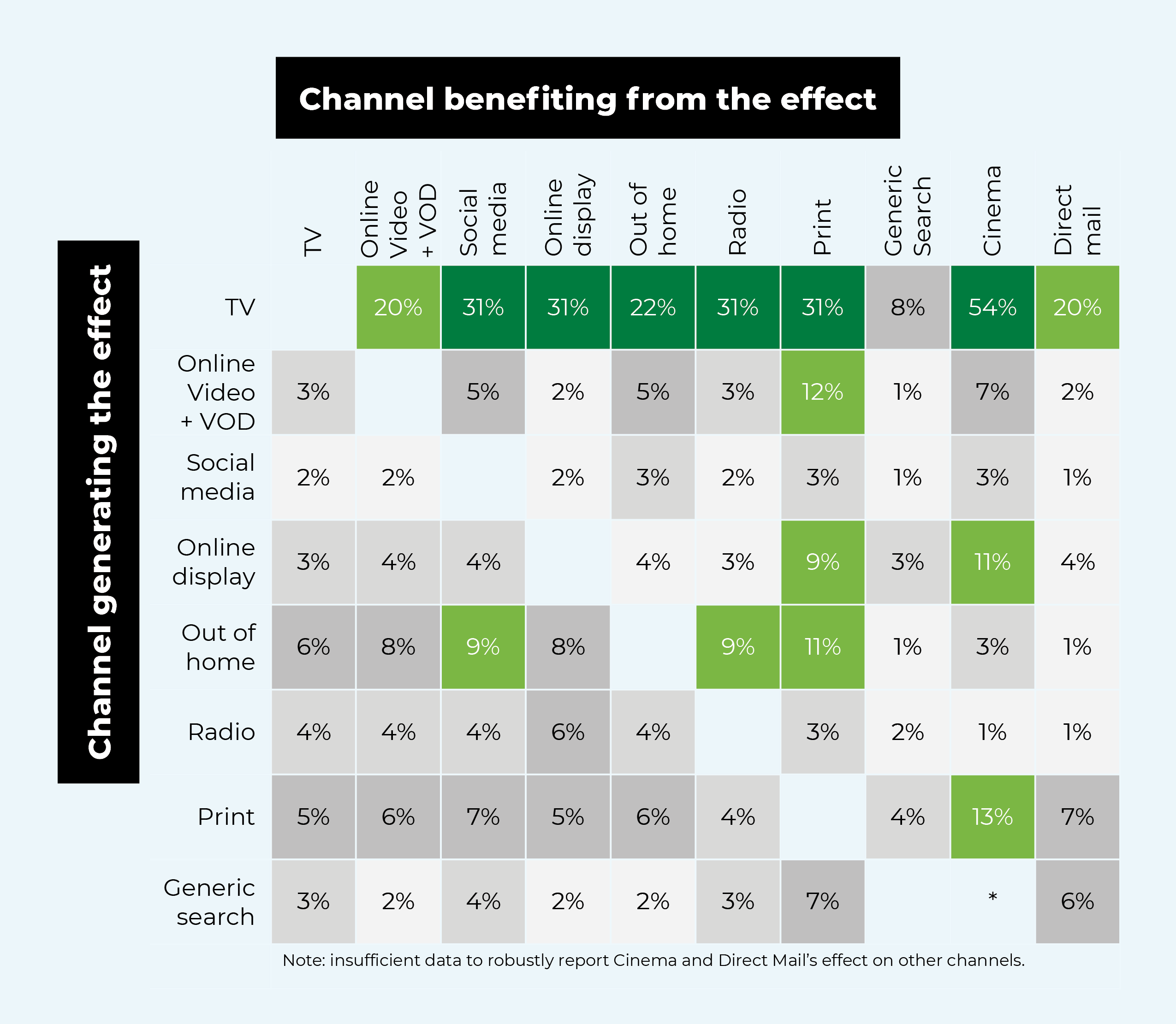
-
Lean into incrementality. One of the clearest ways to track TV’s impact is through incrementality. This goes back to setting goals early on in your campaign planning so that you can establish baselines when needed. By determining baselines for metrics like web traffic or revenue, you’ll be able to attribute shifts after your campaign launches to TV’s influence.
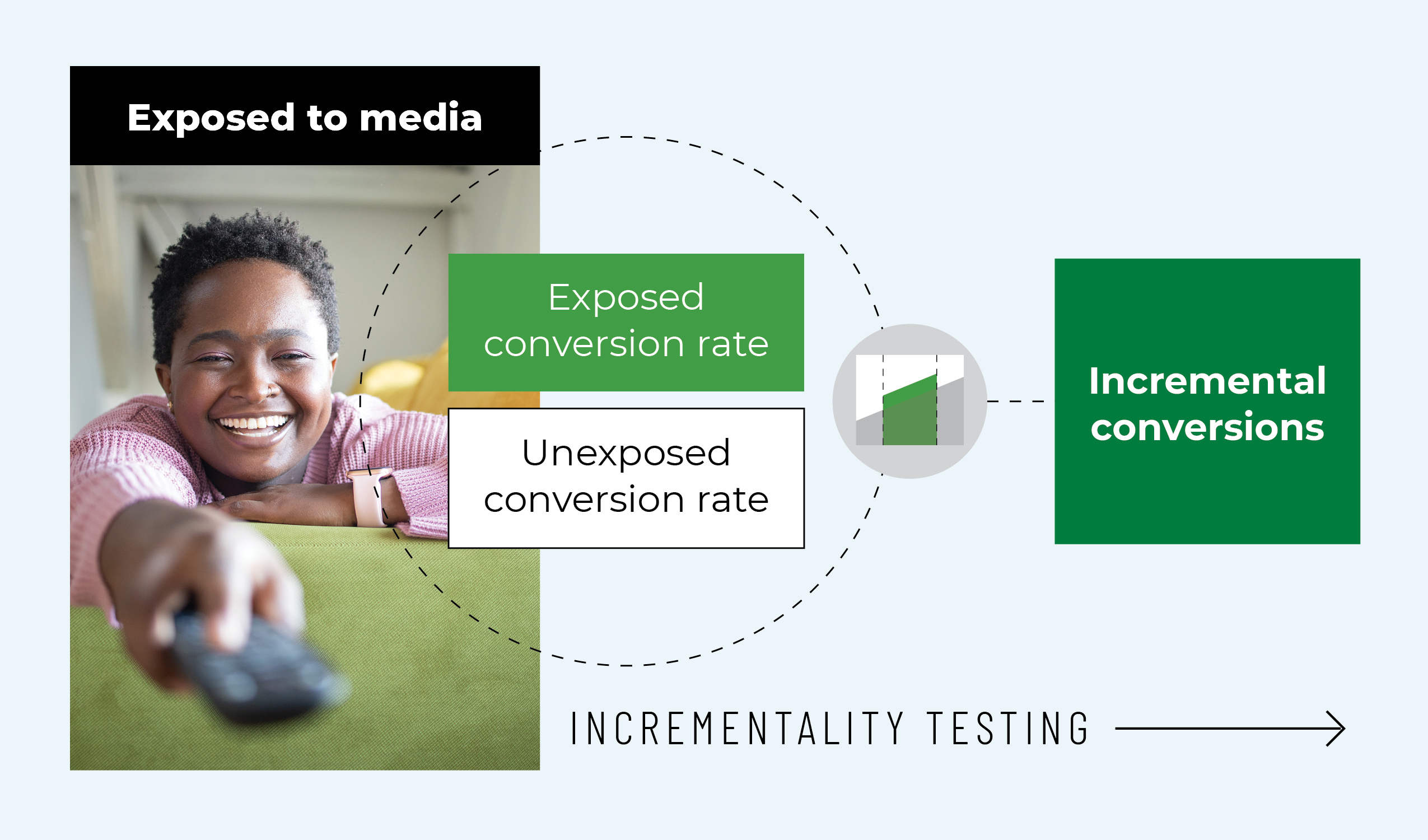
-
Evaluate long-term results with media mix modeling. Get advanced multi-touch attribution with media mix modeling (MMM). MMM is an analysis technique that helps you understand marketing channels’ individual impact on your bottom line. By analyzing historical data and using econometric modeling, you can quantify the long-term impact of your TV advertising campaigns and optimize your media spend across different channels.
Historically, MMM has been expensive and complex but new tools like Robyn and Google’s Lightweight have made MMM accessible for almost all brands. However, using these tools well still requires a team with analytical knowledge. -
Track changes in brand awareness and sentiment. Conduct pre- and post-campaign brand studies. This involves surveying your target audience to determine aided and unaided brand awareness, brand perception, and how you compare to competitors. The pre-campaign study provides a baseline, and the post-campaign study indicates changes attributable to TV.
One note is that brand awareness can take time to shift, especially for mature brands with strong awareness already established. You should wait at least three to six months after launching TV to make a judgment about its impact on brand. -
Watch for shifts in customers’ lifetime value. TV is known to drive higher intent and a more valuable customer. Customer lifetime value (LTV) refers to how much revenue an average customer will generate for a business throughout the total time they are a customer. Tracking this metric can help you understand the full value of customers acquired or touched by TV compared to other channels.
-
Pay attention to big-picture business opportunities. Our clients have seen revenue grow an average of 39% during their first year on TV. They’ve experienced results ranging from TV making them number one in their category to burgeoning stock prices. One client received a call from Disney after airing an ad on TV. Disney was interested in a partnership to promote a new movie, and the client gladly agreed.
Others gained investor interest, press inquiries, improved pricing power, and major partnership opportunities as a direct result of the visibility and credibility they built on TV. These are some of the most difficult results to measure. But they’re also the most important.
Understand TV’s true impact on your business.
At Marketing Architects, we’re committed to transparently uncovering TV’s role in your marketing mix. Which is why we provide our clients with a team of experienced analysts and data scientists to design, measure and optimize your campaign for both immediate sales results and long-term brand impacts. Contact us to learn more.




